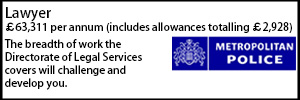North West councils win High Court lead claims over business rates schemes
A High Court ruling against a scheme designed to help owners of empty property avoid or mitigate business rates is likely to see similar ones also fall foul of the courts, potentially saving local authorities millions of pounds.
- Details
That view comes from Matthew Whyatt, of ASW Solicitors, who acted for Trafford and Wigan councils in two lead claims for a further 36 cases, which he said were collectively worth some £15m to local authorities.
His Honour Judge Cadwallader heard the case brought by the two councils against Property Alliance Group (PAG).
The judge said the two lead claims were for the recovery of business rates and declarations that certain schemes designed to avoid or mitigate these were ineffective for that purpose.
He noted a lengthy procedural history including a decision of the Supreme Court in Rossendale Borough Council v Hurstwood Properties (A) Ltd [2021] UKSC 16; [2022] AC 690.
PAG operated a liquidation scheme, which HHJ Cadwallader described as one where a scheme provider incorporates a special purpose vehicle to which the owner of an unoccupied business property grants a scheme lease.
This makes the special purpose vehicle the person entitled to possession of the property and so incurs liability for business rates,
But on or shortly after being granted the lease the special purpose vehicle is placed into members voluntary liquidation in which it can rely on the exemption from business rates for an owner that is a company being wound up voluntarily under the Insolvency Act 1986.
HHJ Cadwallder said this meant that, if operative, no one was liable to pay business rates for the unoccupied property as long as the liquidation and lease continued.
The judge said PAG operated different versions of this scheme and had been sued on the basis that it was liable for rates.
He said it had been admitted that the special purpose vehicles were intended to go into liquidation immediately after the grant of leases, or shortly after, which was relevant to whether the leases conferred a real and practical right to possession, as both the leases and liquidation were part of the same scheme.
It was also admitted that the only business activity undertaken by the special purpose vehicles was entering into the leases and they did not carry out any business activities there. Nor did the vehicles ever call on PAG for resources to conduct any business.
HHJ Cadwallader said: “I am entitled to and do infer from the defendant's decision not to call any directors of PAG to give evidence as to the availability of resources, that such evidence would not have assisted PAG. I conclude that it was never contemplated until after the event that PAG's resources might ever have been in play.
“It is perfectly true that the scheme leases afforded the [vehicles] the legal right to occupy the premises [but] it was essential to the schemes, however, that they should not exercise those rights, and in fact they never did so.
“The scheme leases provided no real benefit to the SPVs, and had no value for them. Their only value was to the landlord, to the extent that they protected it from having to pay [business rates].”
PAG did not call any special purpose vehicle director to give evidence and the judge said: “I am entitled to and do infer that had such evidence been given, its effect would have been to support the claimants' case rather than the defendant's. I conclude that the director's role was simply to be on board with the applicable scheme.”
In the case of the scheme used by PAG at Trafford the judge found the liquidator was selected on the basis of willingness to ensure the scheme lease should not be disclaimed.
“Accordingly, in my judgment there was an abuse of the insolvency legislation,” he said.
The judge explained: “It is no answer, in my judgment, to say that [rates] was avoided, not because of the insolvency legislation, but because of the winding up exemption, which was a feature of the rating legislation.
“The misuse was of the insolvency legislation, to gain the benefit of the winding up exemption for purposes for which it was not provided. It was an abuse of both.”
He said the incorporation of the special purpose vehicle was not on its own objectionable and PAG submitted that since it believed each element of the scheme was not unlawful, it was impossible to see how the schemes might be criticised when each of those lawful elements was added together.
“I do not accept this either,” HHJ Cadwallader said. "It is the combination of the parts which is objectionable.”
He said the schemes concerned were ineffective and that PAG was liable to pay the unpaid rates claimed, subject to his findings (as set out in the judgment) in relation to specific matters.
Commenting on the case, Mr Whyatt said the two lead claims were subject to strike out applications which ended up in the Supreme Court, where he was successful in 2021 but these then had to be remitted to the High Court.
He said: “We now have about 36 cases backed up behind these ones, equating to around £15m of claims. So I think local authorities around the country could almost certainly have claims (relating to these schemes) which could total up to £100m.
“It’s massive, and this was one of the more elaborate schemes, but the court has still thrown it out. So I think it looks like the end for the voluntary liquidation schemes, and it lays the foundation for other types of avoidance schemes failing.”
Mark Smulian
Contracts & Procurement Lawyer
Trust Solicitor (Employment & Contract Law)
Lawyer - Property
Senior Lawyer - Contracts & Commercial
Locums
Poll










































